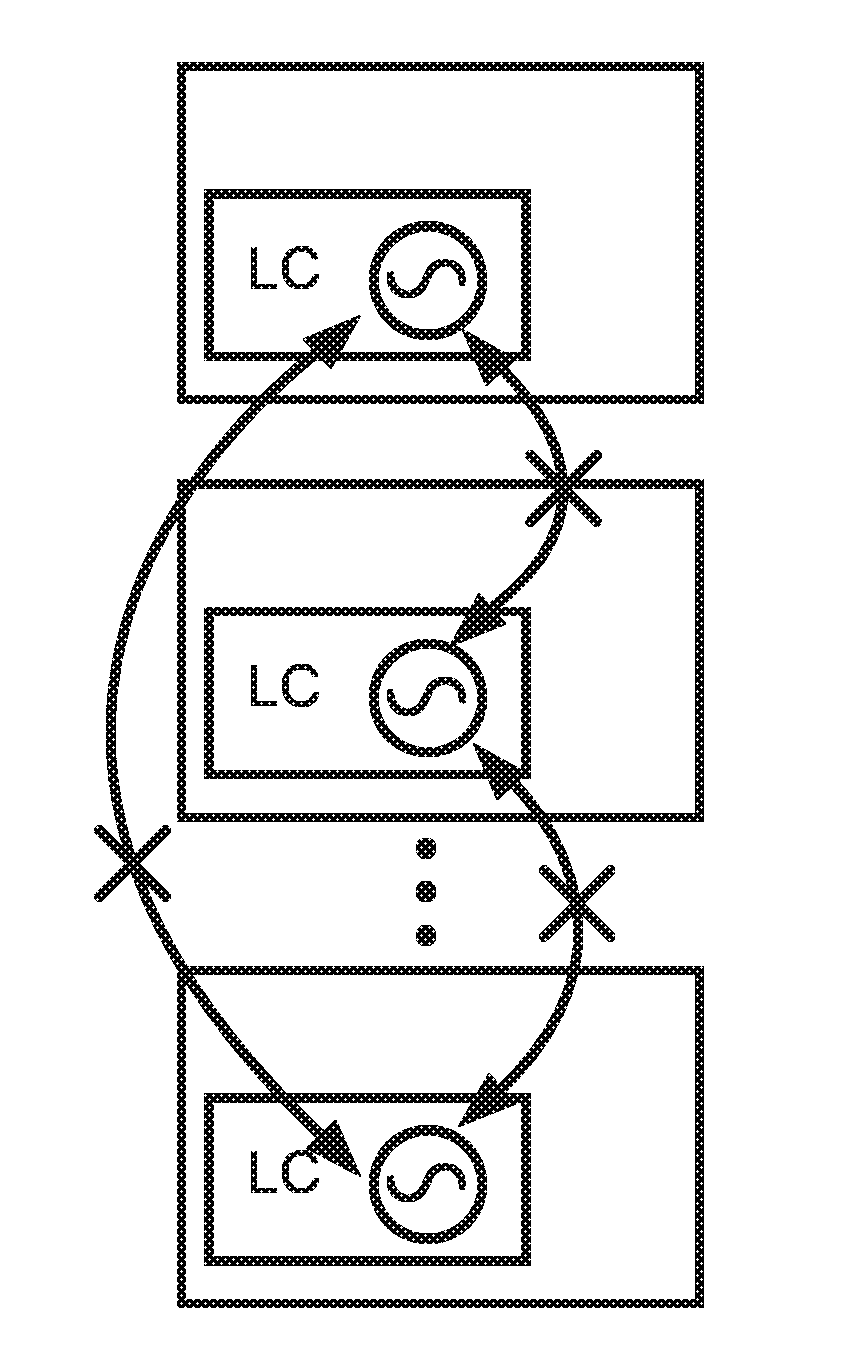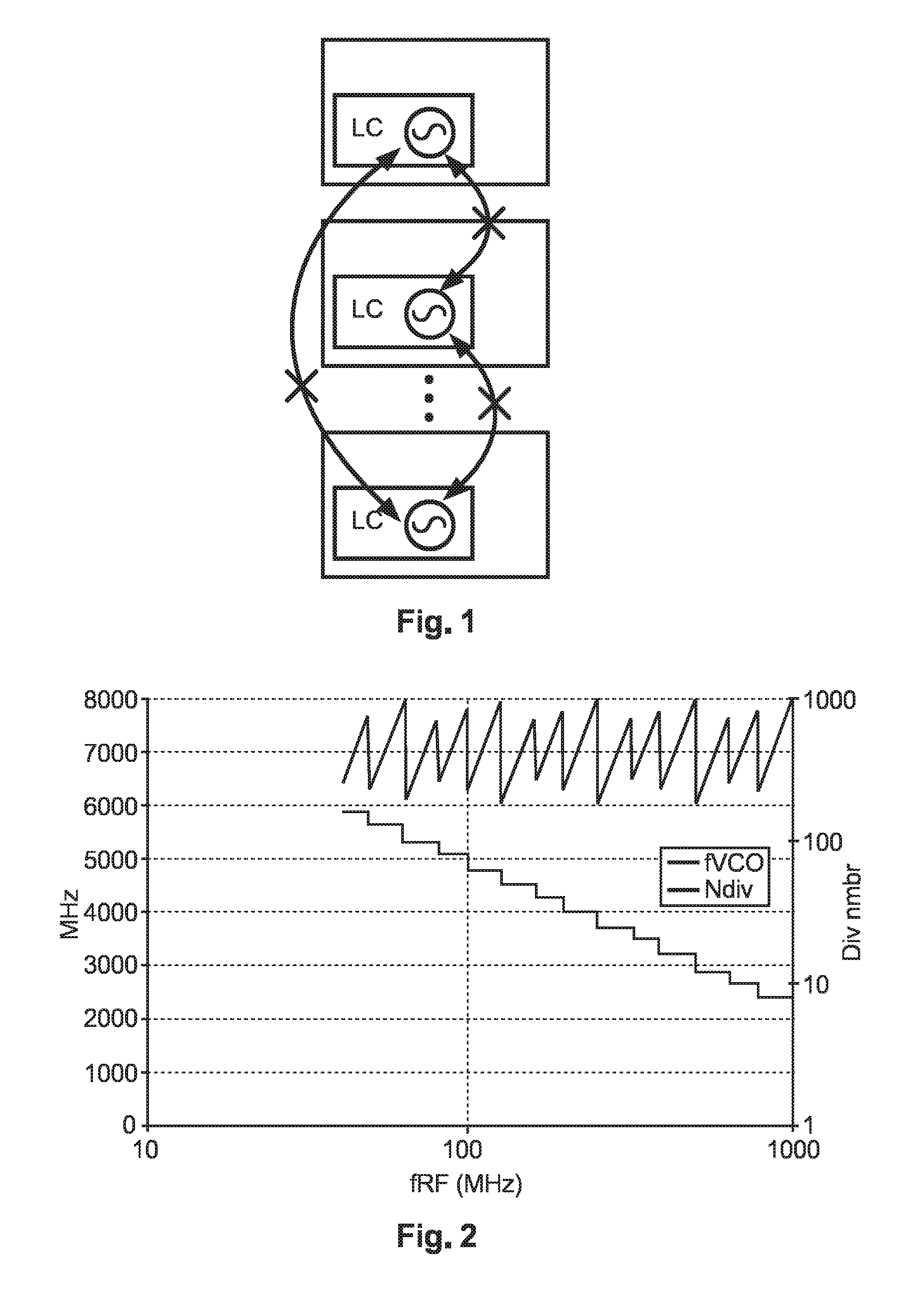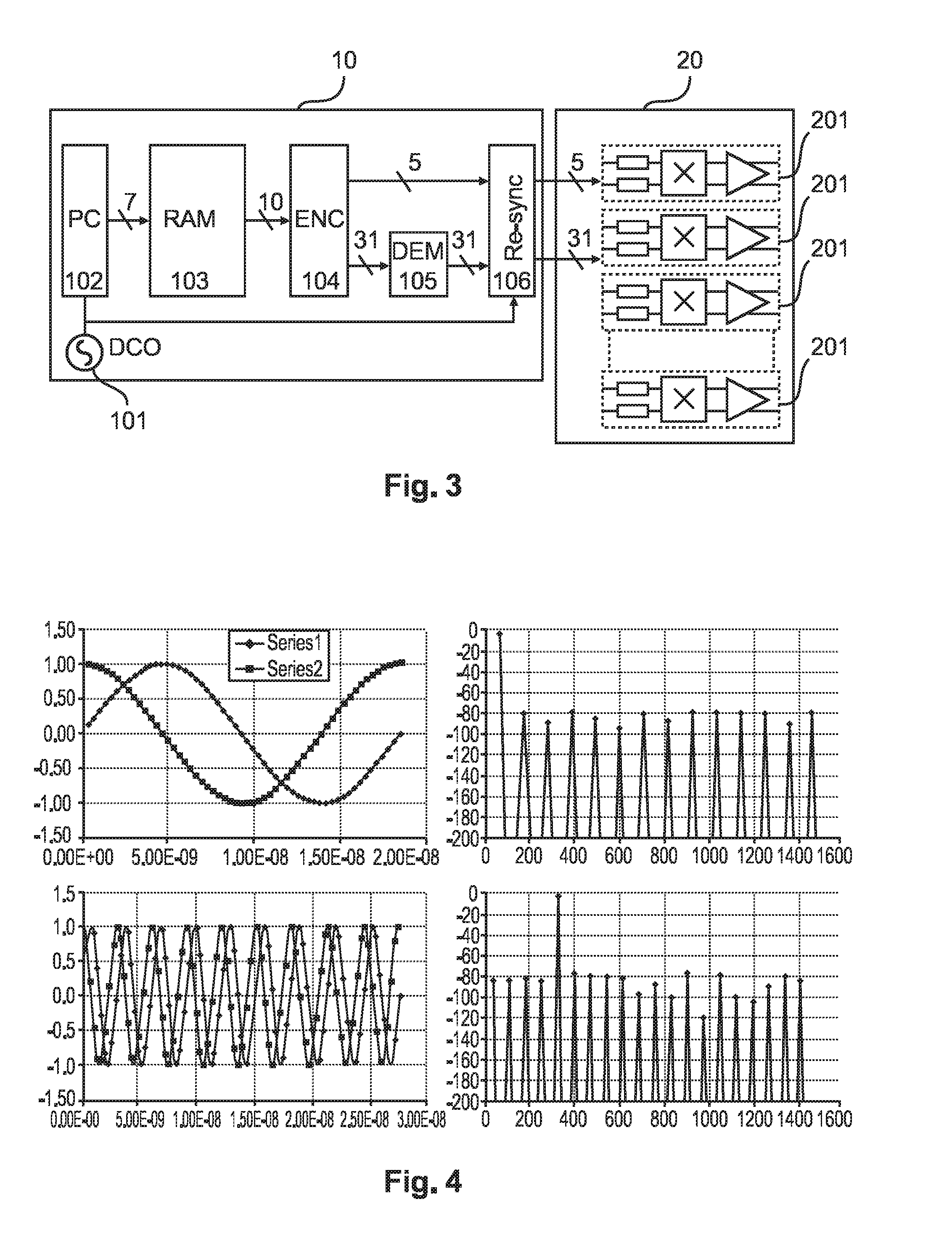Tuner apparatus with digital-to-analog-converter mixer using single local oscillator
- Summary
- Abstract
- Description
- Claims
- Application Information
AI Technical Summary
Benefits of technology
Problems solved by technology
Method used
Image
Examples
Embodiment Construction
[0032]The present invention is further elucidated by the following figures and examples, which are not intended to limit the scope of the invention. The person skilled in the art will understand that various embodiments may be combined.
DESCRIPTION OF THE DRAWINGS
[0033]These and other aspects of the invention will be apparent from and elucidated with reference to the embodiment(s) described hereinafter. In the following drawings
[0034]FIG. 1 shows a schematic block diagram indicating oscillator pulling in multi-stream receivers;
[0035]FIG. 2 shows a diagram indicating the generation of a mixer local oscillator signal by means of a tunable oscillator followed by a programmable divider;
[0036]FIG. 3 shows a block diagram of a DAC mixer divided in local oscillator signal generation and mixer circuits;
[0037]FIG. 4 shows examples of sampled mixing waveforms generated with a DAC mixer;
[0038]FIG. 5 shows a table indicating maximum tuning offsets over tuning range as a function of a programmabl...
PUM
 Login to View More
Login to View More Abstract
Description
Claims
Application Information
 Login to View More
Login to View More - R&D
- Intellectual Property
- Life Sciences
- Materials
- Tech Scout
- Unparalleled Data Quality
- Higher Quality Content
- 60% Fewer Hallucinations
Browse by: Latest US Patents, China's latest patents, Technical Efficacy Thesaurus, Application Domain, Technology Topic, Popular Technical Reports.
© 2025 PatSnap. All rights reserved.Legal|Privacy policy|Modern Slavery Act Transparency Statement|Sitemap|About US| Contact US: help@patsnap.com



